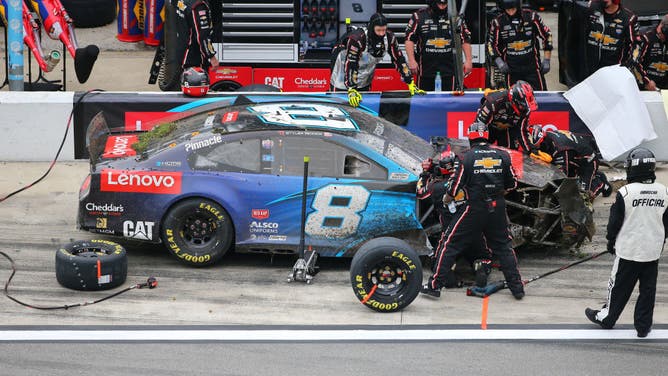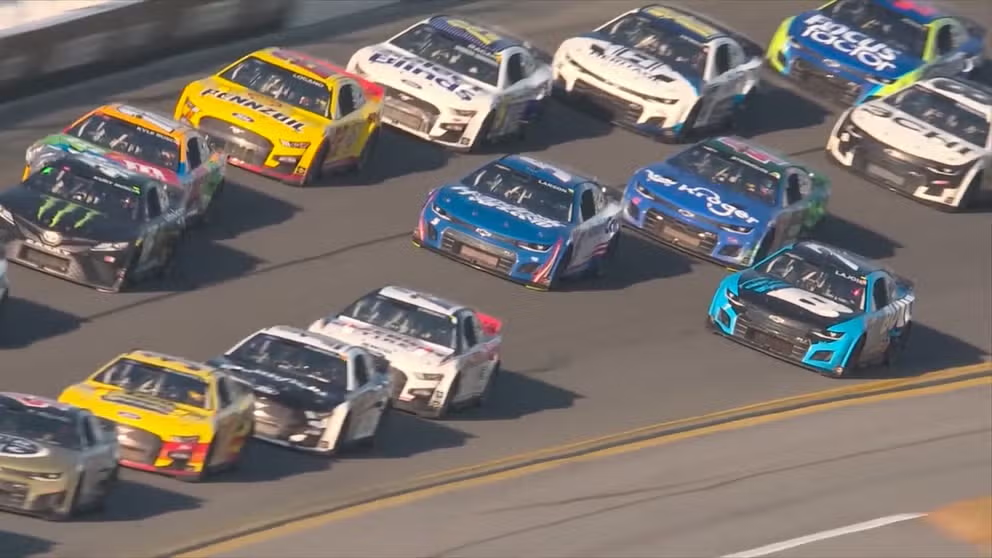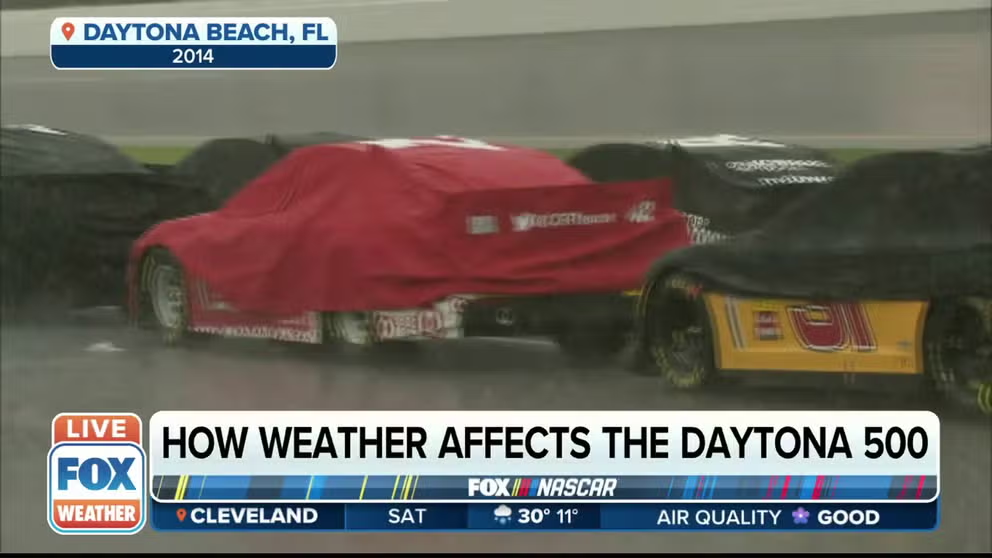From in-car temperatures as high as the 130s to rain, how weather impacts NASCAR races
You might think that rain is the only factor that can have an impact on NASCAR races like the Daytona 500, but in general, the weather can play a huge role in the outcome of a race.
How the weather plays a big role on NASCAR race day
To cross the finish line first, drivers must navigate the weather conditions as expertly as they do the competition.
DAYTONA BEACH, Fla. – The 2023 NASCAR Cup Series schedule officially begins Sunday with the 65th running of the Daytona 500 at Florida's Daytona International Speedway.
And now that football season is over, a lot of people's Sundays will include watching NASCAR and cheering on their favorite driver. You might think that rain is the only factor that can have an impact on the races, but in general, the weather can play a huge role in the outcome of a race.
"Presuming that cold track temperatures are associated with cold air temps, engines have more horsepower and lower fuel usage on cold days," said Aaron Studwell, Ph.D., Chief Meteorologist, Founder and Lead Researcher for RaceWeather and President of ExoConsulting. "This is because the air is denser with more oxygen and improves the engine’s efficiency."
Studwell stated that tire grip is lower during cold weather, which negatively impacts the car's handling.
NASCAR DRIVER EXPLAINS WHAT IT'S LIKE RACING IN THE DAYTONA 500

DAYTONA BEACH, FLORIDA - FEBRUARY 14: A general view of cars on track during the NASCAR Cup Series 63rd Annual Daytona 500 at Daytona International Speedway on February 14, 2021 in Daytona Beach, Florida.
(Brian Lawdermilk / Getty Images)
On the other hand: "When the track is hot, there is increased grip and improved handling," Studwell said. "But tire wear does increase, so again, it’s about trade-off."
So Studwell says warm (but not hot) tires and cold air temperatures are really the best scenarios for a car’s optimal performance.
‘In-car temperatures can climb into the 130s’
During the summer months, the temperatures at the start of a race may be in the 90s with the heat index approaching 110 degrees.
Studwell said generally these temperatures are forecast ahead of time, so the drivers and their race team will put an extra focus on hydration.
How the weather will affect drivers, fans at the Daytona 500
Raceweather founder and researcher Aaron Studwell explains how the weather affects fans and drivers at the Daytona 500.
"In-car temperatures can climb into the 130s with some drivers losing between 10-15 pounds during the course of the race," Studwell stated.
Studwell mentioned that continuous innovations in driver cooling systems now bring outside air into the driver’s helmet through a flexible tube. Over the past few years, some drivers have adopted a cooling system that is built into a shirt worn under their fire suit.
KEEPING NASCAR DRIVERS FROM OVERHEATING IS A BALANCE OF WEIGHT, AERODYNAMICS AND SAFETY

DAYTONA, FL - FEBRUARY 14: Tyler Reddick, driver of the #8 Richard Childress Racing Lenovo Chevrolet Camaro, gets repaired in the pits during the Daytona 500 on February 14, 2021 at Daytona International Speedway in Daytona Beach. Fl.
(David Rosenblum/Icon Sportswire / Getty Images)
NASCAR can’t run on wet road surfaces
Speaking of rain, while it won't be a factor for this year's Daytona 500, it is not very desirable for a racing weekend. NASCAR can’t run on wet road surfaces. Without any tread on the tires, the track becomes dangerously slick for drivers.
NASCAR USES SPECIALTY TRACK-DRYING TECHNOLOGY TO RID THE RAIN FROM RACETRACKS

DAYTONA, FL - FEBRUARY 14: Cars line up on pit road during a weather delay during the Daytona 500 on February 14, 2021 at Daytona International Speedway in Daytona Beach. Fl.
(David Rosenblum/Icon Sportswire / Getty Images)
However, if the race is running but rain is in the forecast, crew teams will monitor both the current weather and forecast, as a crew chief may alter pit stop strategy and timing based on the short-term forecast.
For the passionate NASCAR fans, the weather-related issues range from the heat index to needing sunscreen to taking cover from lightning in the event of nearby storms. As Studwell noted, all these could happen in one afternoon for fans.
"When we issue our forecasts and race day update, there is a reminder for hydration. It’s so easy to lose track of that when tailgating," said Studwell. "Also, even pre-race, we will watch our systems for lightning and issue updates around that too."

DAYTONA, FL - FEBRUARY 14: A general view outside the race track before the Daytona 500 on February 14, 2021 at Daytona International Speedway in Daytona Beach. Fl.
(David Rosenblum/Icon Sportswire / Getty Images)
Either way, the weather plays a key component once you hear "Drivers! Start ... your … engines!!"
What will the weather be like for the Daytona 500?
Currently, it's forecast to be in the upper 70s and partly sunny when the race begins at 2:30 p.m. ET on FOX. By Sunday evening, temperatures will drop to the mid-50s under mostly cloudy skies.

(FOX Weather)

